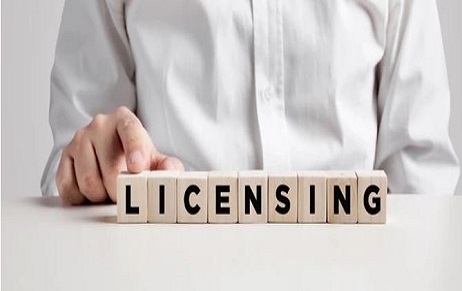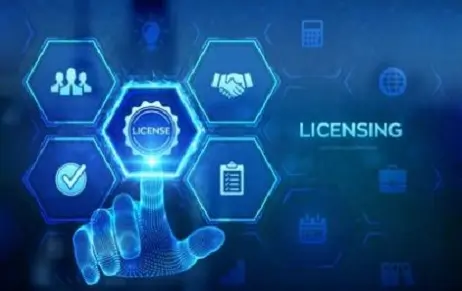Introduction A trademark helps a consumer obtain goods and services of a certain quality and reduces…
A Brief Analysis Of Compulsory Licensing Pertinent To Copyright Law
Introduction
As the title suggests, this particular blog deals with the compulsory licensing of copyright in our country. However, in order to understand compulsory licensing, the concept pertinent to “licenses” needs to be grasped first. Licenses are of two categories: one being voluntary license and the other being compulsory license. Section 30 of the Copyright Act, 1957[1] talks about voluntary licensing. A voluntary license is simply the transfer of rights from the existing owner to a person who wishes to utilize the work without being blamed for any sort of violation or infringement of the rights of the actual owner of that particular work.
A compulsory license is generally granted to an act but it does not mandate any prior permission from the owner of that particular work. Thus, the person to whom the compulsory license is granted can exclusively use the rights originating from the work without the fear of violating or infringing the author’s rights. Section 31[2] of Copyright Act, 1957 deals with compulsory licenses in works that are withheld from the public. It says that in case any complaint is made to the Appellate Board that the owner of copyright of the work, during the term of the copyright, has either refused to republish or allow the republication of the work or has refused the communication of such work, either through broadcasting or through sound recording, then considering the aforementioned circumstances the Appellate Board shall first give a reasonable opportunity to the owner of the particular work to respond. After hearing the owner, if the Appellate Board is not satisfied with the grounds of refusal that has been mentioned by the owner, then the Board shall direct the Registrar of Copyright to grant the complainant a license to republish the particular work or communicate the particular work to the public. However, the person who received the license can only be granted if he pays a certain amount of compensation to the actual owner of the work and provided he follows the other guidelines determined by the Appellate Board.
A landmark case that determined the fixed amount of royalty
As we talk about royalties, the never-ending dispute between radio stations and music companies cannot be ignored. The same can be best understood by the matter of Music Broadcast Pvt Ltd & Ors. vs. Phonographic performance Ltd.[3] In this particular case, a dispute took place as the PPL was not ready to grant the license to the radio station at the royalty that had been suggested by them. Aggrieved by this decision of PPL, nine applications were filed by the FM radio stations under Section 31(b) of the Copyright Act. These applications were filed before the Board for being granted with compulsory license for the broadcast of the music produced by PPL. After hearing the matter from both the sides, the Board came to the conclusion that 2% of the net advertisement earnings by each FM radio station shall be distributed in proper proportions to all the music providers. Thus, the Board passed a landmark judgement by fixing the rate of royalty for all the radio stations as well as music companies.
Another important case pertinent to compulsory license
In the matter of Entertainment Ltd. v. Super Cassette Industries Ltd[4], the importance of section 31A comes into play. In this particular case, Radio Mirchi was playing the song whose rights were held by Super Cassette industries. Super Cassette Industries felt their rights to be infringed and hence they filed for a permanent injunction. In the meantime, the FM station applied for the grant of compulsory license to the Copyright Board under section 31(b) of the Copyright Act. Considering all these circumstances the main issue that came up was whether this situation fulfils the criteria of being granted a compulsory license.
The radio station put forth in their argument that since a license has already been granted to AIR and Radio City, there shall not be any hindrance from the Board’s side to provide the compulsory license to the radio station. After hearing the arguments from both the sides, the Board came up with the conclusion that Sec 31A can only be applied when the work is denied to be published. In this particular case, license has already been obtained by the AIR and Radio City, hence it was never barred or protected from being published. Thus, the Board decided that the arguments put forth by the radio station held no particular ground. Also, the Board made the Radio station liable for infringement of copyright of the music.
Conclusion
The previously mentioned case studies as well as provisions clearly defines the importance of compulsory licensing in today’s scenario. There are certain provisions of compulsory licensing that very well protect the rights of the public of getting access to a particular piece of work. Thus, the concept of compulsory licensing is an interesting aspect of copyright law that is carefully dealt with by the copyright board in order to protect the rights of the public in general.
Author: Shreyasi Nath – a student of KIIT School of Law, in case of any queries please contact/write back to us via email [email protected] or contact us at IIPRD.
References:
[1] The Copyright Act, 1957 https://indiankanoon.org/doc/291394/
[2] The copyright Act, 1957 https://indiankanoon.org/doc/969912/
[3] Phonographic Performance Ltd. vs Music Broadcast 2004 (29) PTC 282 Bom
[4] Super Cassette Industries Ltd. vs Entertainment (India) AIR 2004 Delhi 326, 112 (2004) DLT 549



